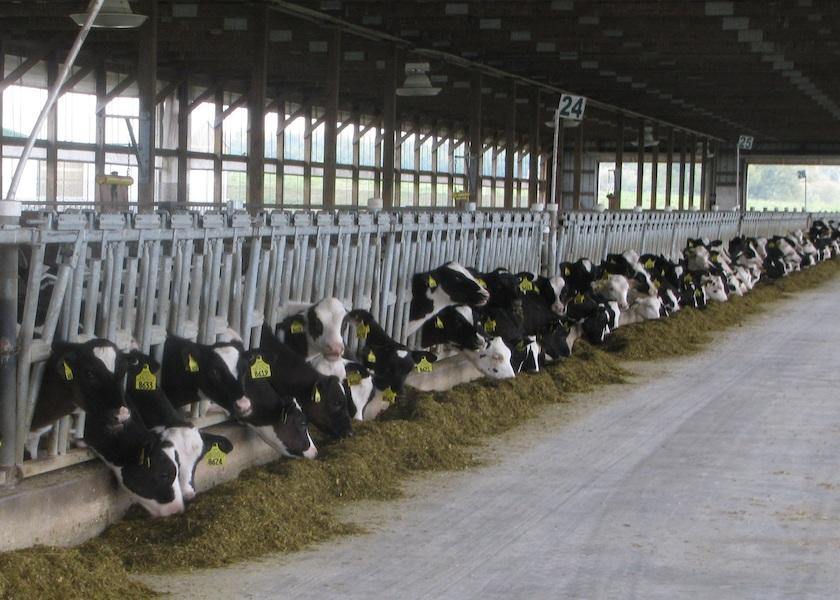Mycotoxins Threaten Calves and Heifers, Too

Every harvest season carries with it the dangers of mycotoxin – toxic substances produced by molds growing on crops, either before harvest or in storage.
According to Bill Seglar, Nutritional Sciences Manager for Pioneer, only a handful of mold species produce mycotoxins, out of the thousands that grow in stored grain and feed. But when they are present in dairy feed, mycotoxins can be detrimental and even deadly.
In a University of Wisconsin Dairy Extension publication, Seglar said symptoms of mycotoxin contamination are rather vague, and may include reduced feed intake, feed refusals, unthriftiness, rough hair coat, reduced milk production, poor body condition and reproductive problems. He added field investigations also have tagged mycotoxins to fresh-cow problems, including displaced abomasum, ketosis, retained placenta, metritis, mastitis, and fatty livers.
Unfortunately, mycotoxins don’t just unleash their subtle-but-serious wrath on lactating cows. Ellan Dufour, Dairy Research Nutritionist with Hubbard Feeds, was curious about the specific effects of mycotoxin contamination on young stock, noting that most mycotoxin research in dairy animals had been focused on the impacts on lactating cows.
“If mycotoxins can have such an extreme influence on cow health and production, then we can assume they also can impact the growth, performance, and health of calves and heifers,” she said.
Dufour and her colleagues partnered with researchers at the University of Minnesota-Waseca to evaluate the effects of mycotoxin-contaminated starter grains on the health and development of preweaned calves and older heifers.
Not surprisingly, they found a wide array of symptoms and setbacks, ranging from reduced rumen function and feed efficiency, to delayed sexual maturity and suppressed immunity. Specifically, they identified the following, quantitative effects of mycotoxins on performance and health of calves through 56 days of age:
- 10% reduction in average daily gain
- 15% reduction in calf starter intake
- 10% reduction in dry matter intake
- 50% increase in treatment costs
Of additional concern in calves is the immunosuppressive effects of mycotoxins during a critical life stage. University of Kentucky veterinary researchers Michelle Arnold and Cynthia Gaskill noted that aflatoxin, a highly potent mycotoxin, may result in vaccine failure and/or poor response to antibiotics.
The Kentucky researchers cited a field case in which young calves (300-450 pounds) were fed a ration of corn, whole cottonseed, cotton gin trash, molasses, and mineral for several months. The feedstuffs were evaluated for mycotoxins when the calves started to exhibit signs of depression; lethargy; loss of body movement control, poor weight gain; respiratory disease with poor treatment response; and death.
Mycotoxin poisoning was suspected, in part due to the presence of enlarged, fibrous livers in necropsied animals. Laboratory evaluation of the feedstuffs revealed aflatoxin B1 levels ranging from 96-1,700 ppb in the cottonseed; 100-857 ppb in the gin trash; and 14 ppb in the corn. Aflatoxin B1 levels over 1,000 ppb are considered extreme, and may cause sudden, abnormal neurological symptoms and death due to severe liver and brain damage.
“In these instances, it is important to sample the final, as-fed ration to determine the total level of aflatoxin the animal is consuming,” they noted. There is no specific treatment for mycotoxin poisoning, and no FDA-approved feed additives to serve as mycotoxin binders. Arnold and Gaskill said the best remedy is to immediately remove contaminated feedstuffs from calves and replace it with clean feed. Protein, vitamin and trace element supplementation also may aid in young-stock recovery.







